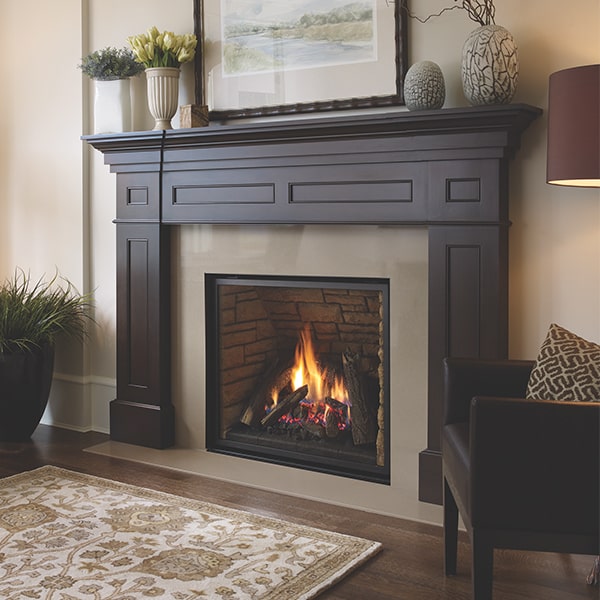Electric fireplaces offer a modern, efficient way to add warmth and ambiance to any room without the need for wood or gas. They provide heat through electricity and often come with realistic flame effects that mimic traditional fireplaces. They are easy to install, require minimal maintenance, and can heat rooms of various sizes effectively.
These fireplaces come in multiple styles including freestanding units, wall-mounted models, inserts for existing mantels, and even TV stands, making them adaptable to different living spaces and design preferences. Users can enjoy the warmth and aesthetic appeal without the mess or safety concerns of conventional fireplaces.
With advances in design and technology, electric fireplaces have become a popular choice for homes across Canada and beyond, combining comfort with convenience. Their flexibility and range of features make them a practical heating solution for many households.
Electric Fireplace Overview
Electric fireplaces provide heat and ambiance using advanced technology without the need for traditional fuel sources. They offer a range of designs and features, allowing users to select units based on heating capacity, visual effects, and installation preferences.
How Electric Fireplaces Work
Electric fireplaces generate heat by converting electrical energy into warmth through built-in heating elements. Common heating methods include infrared panels, which emit radiant heat directly onto objects and people, and fan-forced heaters that circulate warm air to heat the room efficiently.
The fire effect is created using LED lights, reflective materials, and flame simulations that imitate the look of a real fire without combustion. This eliminates the need for venting, wood, or gas. Users control temperature and flame settings via remote or onboard controls, making them easy to operate and maintain.
Types of Electric Fireplaces
There are several types of electric fireplaces suited for different spaces and installation needs:
- Wall-mounted units: Attach directly to a wall, saving floor space and offering a modern aesthetic.
- Insert fireplaces: Designed to fit into existing fireplace openings, converting traditional fireplaces without renovation.
- Freestanding fireplaces: Portable and versatile, these can be moved around and placed anywhere with electricity.
- Mantel fireplaces: Resemble traditional fireplaces with a surrounding mantel, combining style and function.
Each type varies in heating capacity and size, allowing users to match products to room dimensions and style preferences.
Key Features and Technologies
Modern electric fireplaces include multiple features for efficiency and convenience:
- Adjustable heat settings allow users to control temperature output.
- Flame intensity and color options enhance visual customization.
- Energy-saving modes optimize electricity consumption.
- Safety features such as automatic shutoff prevent overheating.
- Remote controls and smart connectivity increase user convenience.
- Some models incorporate thermostats and timers for precise climate control.
These features combine to deliver flexible heating solutions that require minimal installation and maintenance.
Choosing and Installing an Electric Fireplace
Choosing and installing an electric fireplace involves evaluating size, style, power requirements, and proper upkeep. Factors such as room dimensions, electrical access, and manufacturer guidelines influence these decisions.
Selecting the Right Size and Style
The fireplace size should correspond to the room’s square footage. For small rooms, units rated between 400 to 750 square feet work efficiently. Larger rooms may require models designed for up to 1,000 square feet or more.
Style choices range from traditional mantel designs to sleek wall-mounted panels. The style should complement the existing decor and meet functional needs, such as portability or fixed installation.
Consider heating capacity alongside aesthetics. A fireplace with adjustable flame visuals and settings offers more control and comfort. Remote control options are also common for user convenience.
Installation Requirements and Best Practices
Selecting an appropriate location is essential. The spot must have easy access to a standard electrical outlet or, for a hardwired model, proper wiring installed by a professional.
Keep manufacturer clearance requirements in mind to ensure safety and prevent overheating. Typically, this involves maintaining specified distances from walls, furniture, and combustible materials.
Installation methods include simple plug-in units and hardwired installations. Plug-in models offer flexibility and can be moved as needed, while hardwired options provide a cleaner look but require professional installation.
Ensure the mounting surface is stable and capable of supporting the fireplace’s weight, especially for wall-mounted units. Follow all local building and electrical codes during installation.
Maintaining and Cleaning Your Electric Fireplace
Regular maintenance extends the fireplace’s lifespan and ensures safe operation. Dust and vacuum the vents and interior components every few months to prevent buildup.
Use a soft cloth and mild cleaner to wipe down the exterior surfaces, avoiding abrasive materials that can damage finishes.
Check electrical cords and plugs periodically for wear or damage. Replace any faulty parts promptly to avoid electrical hazards.
For models with simulated flames, replace bulbs or LEDs following the manufacturer’s instructions to maintain visual effects. Routine inspection of the unit’s heating element is advised to detect any malfunction early.







0 Comments